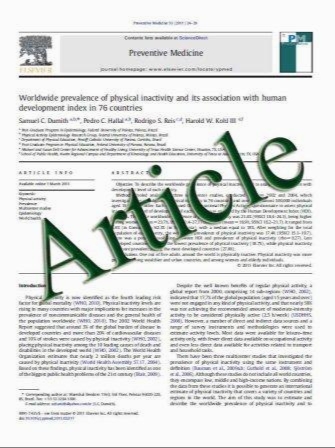Relationship of detection rate of PET cancer screening examinees and risk factors: analysis of background of examinees
- نوع فایل : کتاب
- زبان : انگلیسی
- مؤلف : Koji Shibata Masami Arai Masaaki Matsuura Kimiichi Uno Teruhiko Yoshida Toshimitsu Momose Kuni Ohtomo
- چاپ و سال / کشور: 2010
Description
Objective PET cancer screening is performed widely in Japan as opportunistic screening, but no study has focused on the correlation with various cancer risk factors and the seeking bias of examinees and cancer detection rate. Analyzing our large series of PET cancer screening data, correlationswith cancer detection rates according to general cancer risk factors and PET detection survey were reviewed, and the selection bias of the medical examinees was determined. Methods 19189 examinees who underwent PET cancer screening were enrolled. Using logistic-regression analysis, we analyzed correlations between smoking history/drinking history/cancer family history and detection rates of thyroid cancer/breast cancer/colorectal cancer/lung cancer, which are the main malignancies detected in PET cancer screening. In addition, we evaluated seeking bias of examinees, analyzing correlations between the presence of cancer risk factors and prior screening checkups at other institutions to our PET cancer screening using a matched case–control study. Results Cancer detection rates by FDG-PET were 1.17% (224/19189), beingmuch higher than those of standard cancer mass screenings. In males, statistically significant correlations were seen between lung cancer and smoking, and between prostate cancer and a family history of prostate cancer, but not between the detection rates of three other types of cancer (thyroid cancer/lung cancer/colorectal cancer) and other cancer risk factors. In females, detection rates of four types of cancer (thyroid cancer/lung cancer/colorectal cancer/breast cancer) were significantly higher in the examinees without cancer risks, and subgroup analysis according to types of cancer did not indicate significant correlations either. The matched case–control study evaluating seeking bias indicated that a significant proportion of the examineeswith cancer risks had undergone prior cancer screening at other institutions. Conclusions Our study indicated that there was significant seeking bias for prior screening of examinees, with this accounting for the fact that this study did not find a significant correlation between cancer risks and cancer detection rates. The results of our study indicated that PET cancer screening can provide high cancer detection rates.
Ann Nucl Med (2011) 25:261–267 DOI 10.1007/s12149-010-0458-7 Received: 7 December 2009 / Accepted: 14 November 2010 / Published online: 28 December 2010


